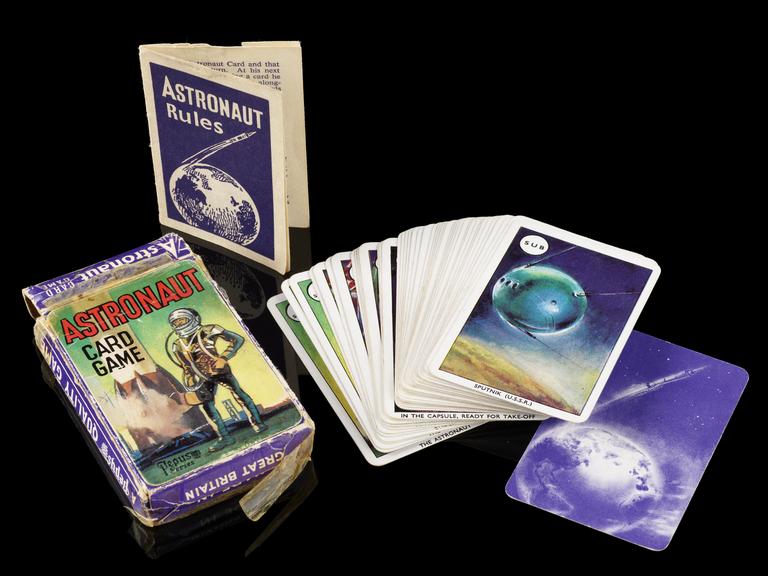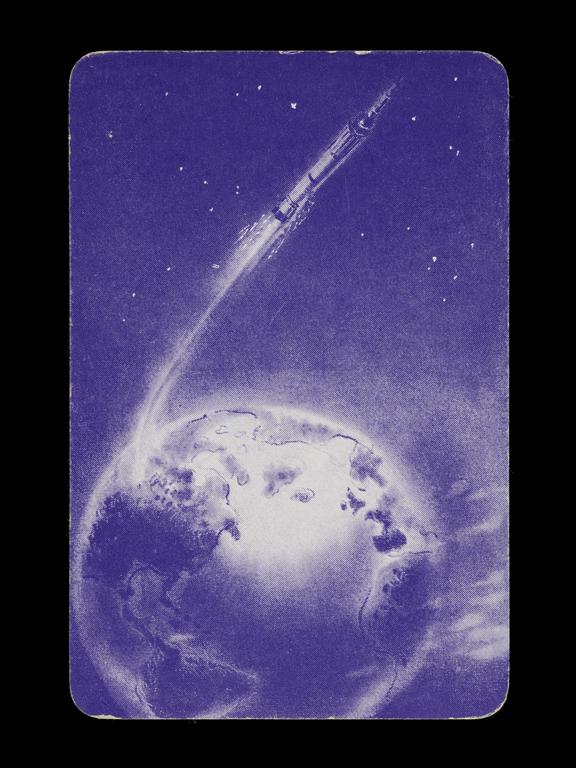When you think of how space is represented in a museum, you probably first think of rockets, satellites, and spacesuits, but there are so many different objects that help to capture humanity’s relationship with space and what it means to us.
The Science Museum Group Collection holds a wide variety of objects that reflect the cultural impact of space exploration, from gourmet space food developed by celebrity chef Heston Blumenthal to costumes from the classic ‘70s sci-fi series Space 1999.

One of the Science Museum’s latest acquisitions is this ‘Astronaut’ card game kindly donated by a member of the public.
Released by British game and stationery company Castell Brothers Ltd in 1960, the aim of the game is to get your astronaut to land on the moon- something that was achieved in reality by NASA 9 years later with the Apollo 11 mission.

In a game of ‘Astronaut’, your mission to the moon consists of seven steps. Each step is represented by a card, and in order to win, you must play each card in order and be the first to get your astronaut to the moon.
Here are the seven steps of your mission to the moon, according to ‘Astronaut’:
- The Astronaut: You’ve hired an astronaut for your mission to the moon. Helen Sharman, the first Briton in space, became an astronaut after answering an advertisement she heard on her car radio.
- Undergoing tests: Your astronaut has to undergo rigorous tests and training before they can go to space. ESA astronauts typically train for at least three years before they go on their first mission into space.
- Approaching the elevator: It’s finally launch day, and your astronaut is making their way to the rocket.
- In the capsule, ready for take-off: Your astronaut is buckled in and ready for the countdown. All systems go!
- The take-off: The rocket’s booster engines ignite, jetting out hot gases that thrust the rocket upwards and off the ground. At a successful take-off, it’s tradition for NASA officials to make the announcement “We have lift-off!”.
- Boosters drop away: Once the boosters have done the heavy lifting and their fuel has been spent, the first stage of the rocket drops away. The engines on the next stage of the rocket ignite, continuing to propel the rocket out into space.
- Landing on the moon: The landing module touches down on the lunar surface, delivering your astronaut to the moon. Mission objective complete!

However, you can also draw a card that delays your mission due to illness, bad weather, or a computer check. Earlier this year, the historic SpaceX and NASA Crew Dragon launch was delayed due to stormy weather.
As well as the mission-related cards, there are special cards depicting significant American, Soviet and British technology, such as Mercury, Sputnik, and Jodrell Bank, respectively.
This card game reflects a spirit of celebration of the Space Age in Britain. The widespread popularity of space exploration-themed games in the late 20th century illustrate how the advent of space flight and the Space Race captured the public’s imagination.

Of course, technologies used for space exploration form a fascinating and vital part of the Science Museum Group’s space collections, but it is the more everyday objects like this that help to tell the story of its influence on popular culture, and how the achievements of space agencies, astronauts and scientists have manifested in our daily lives.